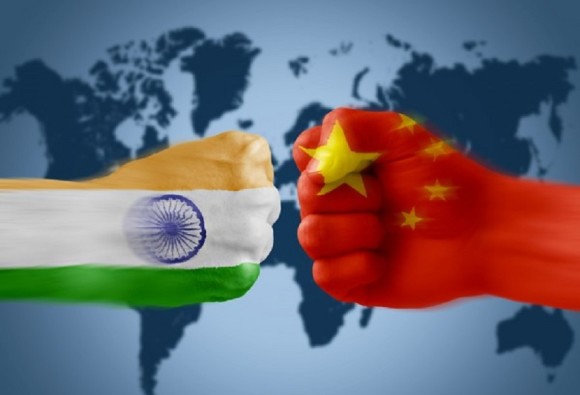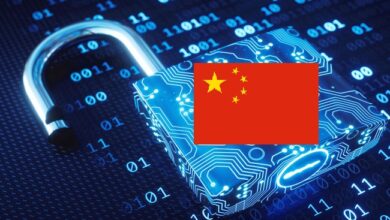Technology Law / Cyber Law
India-China: Beyond the Line

This article is second in our five-part special series on the India-China dispute and its impact on the Indian Economy and the Technology sector. The first article can be accessed here.
Boycotting Chinese Goods: Do we have enough alternatives?
The standoff between the Indian and the Chinese army on the border has crept into the economic sector as well. The Indian government believes that it can gain an advantage over its neighboring counterpart (cum nemesis) by defeating the ‘dragon’ on the economic front. The idea is to boycott Chinese imports in India, which is coincidentally, also China’s biggest consumer market, to pressurize it to amend its stand with regards to the border dispute. Especially, when the economies across the world are hard hit by the ongoing pandemic, with neither China nor India being an exception to the same, it’s important to push the Chinese influence and imports out of our market, if it engages in problematic practices and illegal data mining, that in turn promotes its political agenda. However, seeing that India is heavily dependent on China, it might not be the best of moves to boycott China overnight, as has also been discussed in Part I of the ongoing series. The simple logic talks about how to boycott something first, you need to find alternatives to replace it with. The question remains, however, does India have alternatives strong enough to undo its dependence and uproot the unruly behavior of its Chinese counterpart.? The same needs to be taken into consideration, to ensure that such drastic measures do not turn the economy upside down.
Despite such a decision being subject to fair and prudent consideration of concrete statistical and data terms, it has been given a nationalistic flavor. This only oversimplifies the situation while completely ignoring the consequences that it can unleash in the long run. This has been very aptly put in by leading Indian economist Swaminathan S.Anklesaria Aiyar, “Panicky restrictions look defensible in the short run and ridiculous in the long run.”
India’s Heavy Reliance on China
Despite recurring tensions, India has been one of the biggest trade partners of China. Last year India’s total bilateral trade accounted for $92 billion out of which its trade deficit with China was a whopping $57 billion.[1] Additionally, China accounts for 9% of India’s total export along with forming 18% of the total merchandise imports.[2] When looking for alternatives, key areas would be securing raw materials for pharmaceutical, automobile, electronics and agriculture industries. Any other source thus found, would have to be substituted for imports in these areas and that too in heavy numbers. India’s 70% APIs, 70% electronic components, 45% consumer durables and 20% auto components, come from China[3]. This reliance on China for not only consumer goods but raw materials for our industries is undeniable.
Few Digital Alternatives
To talk about the digital front, Chinese brands have flooded the Indian market. Even with a casual perusal, the market reveals Chinese dominance. In April-February of 2015-16, the electronic imports from China stood at $37.2 billion.[4] Over the years, not only did India import these electronics items from China but the low costs and reasonable quality of goods coming from China, has meant that our country has lost its manufacturing capacity to its neighbor’s aggressive policies and ultra-competitive pricing, as is most evident in the electronics sector. India’s exports of electronic items declined from $8.2 billion in 2012-13 to $5.3 billion in 2015-16.[5] To take note, smartphone industry brands like Xiaomi, Oneplus, Vivo, Oppo, Realme, and Huawei are clearly dominating the market with a user base of 450 million consumers, and a combined share of $8 billion in the Indian market.[6] These brands are known for quality at an affordable price. Xiaomi alone accounted for a 28% share of the Indian market in 2019.[7]
For India to replace them completely, there are alternatives. However, these alternatives include expensive options like Samsung, Apple, Google, Motorola, Asus, LG, etc. This in turn has meant that these brands have a hard time living up to the needs of the common Indian middle class, which forms a major chunk of the population, and the economy. There are cheaper alternatives from Indian Brands like Micromax, Lava, etc. which have completely lost market share over the last couple of years. However, this might be a chance for them to resuscitate their dying consumer base in the Indian market.
Micromax, Intex, Lava, and Karbonn did once enter the smartphone market and dominated the said sector in India for a while. However, they were quickly side-tracked by Chinese brands which offered value for money options with newer and more technologically advanced features. These Indian brands now exist on the side-lines of the digital market-making television sets and other supplementary equipment. For them to suddenly churn out innovative alternatives competing with high-end Chinese tech seems tough, but not impossible.
It’s not just about providing alternative brands for people to go to though. The impact of overnight drastic measures could also include loss of employment and manufacturing units in India. There are approximately 200 manufacturing facilities in India for Chinese mobile handsets, which are responsible for the assembly of mobile phones, along with various other electrical goods (the entire components still being shipped from China). In 2018-19 these facilities had produced 29 crore units.[8]
Even non-Chinese brands like Apple import components from China to be assembled in India. According to Indian Cellular and Electronics Association (ICEA), we have already lost Rs.40,000 crore worth production amidst the boycotting rumors.[9] Any alternative thus wouldn’t suffice the pressure of instantly developing an ecosystem that would engage all these existing facilities and producing high-end products without causing a loss of employment.




